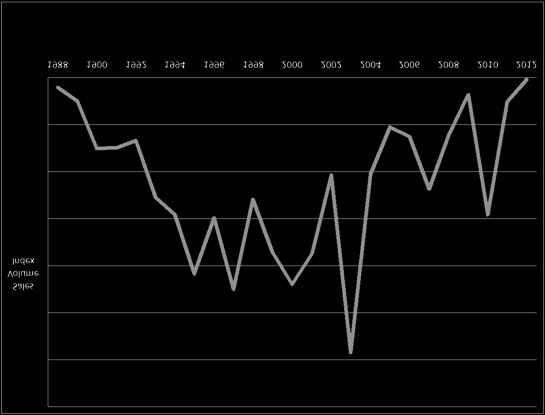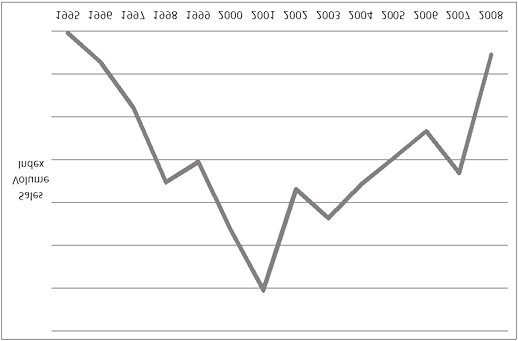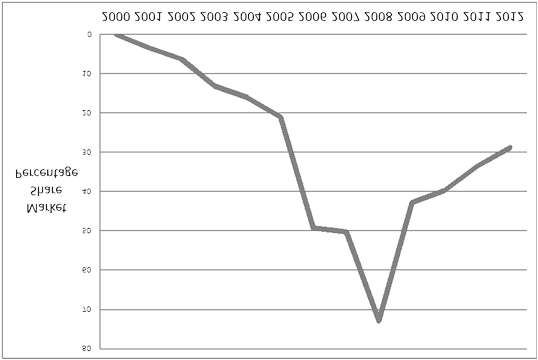39
Adoption of forage technologies
JOHN CARADUS¹, SIMON LOVATT² and BRUCE BELGRAVE¹
¹Grasslanz Technology Ltd, PB 11008, Palmerston North.
²AgResearch Ltd, PB 3123, Hamilton
[email address]
Abstract
the inability to trial the technology without an
Pastoral farmers seek to continue to increase on-farm
irreversible and/or large commitment
productivity, and to do this they need new forage options
• An unclear cost-benefit relationship
that they can adopt into their current management
However, in general, New Zealand farmers have
strategies. Four case studies show that New Zealand been rapid adopters of new forage technologies, such
farmers have rapidly adopted new technologies that as the herb chicory, and novel endophytes that have
include forage herbs, white clovers with improved been shown to improve perennial ryegrass persistence
stolon growing point densities, and novel endophyte and reduced animal health problems. Plant breeders
technologies. The less disruptive these technologies have also attempted to achieve the compromise of high
are to accepted farmer management strategies the production and good persistence in important species
greater the likelihood of adoption.
such as white clover. This paper attempts to show the
Keywords: Forage technologies, adoption, chicory, importance of these developments, and how willing
white clover, endophytes
farmers have been to adopt them into their farming
systems. This paper will show that some pasture
Introduction
based technologies are adopted and used by farmers,
In 1918, Leonard Cockayne stated that “the yield of sometimes rapidly but they all eventually succumb to
meat or butterfat per acre is primarily a matter of the new options and follow the normal bell shaped sales/
plant covering of the farm” (Cockayne 1918). This is
marketing curve. In the process they generate increased
still true today, and yet it is acknowledged that rate income for the industry.
of pasture renewal may be lower than is optimal for
economic growth in the pastoral sector.
Chicory use in New Zealand
New Zealand farmers are arguably the best in the Although chicory originated in southern Europe, it
world at adopting new pastoral technologies, which has
was in New Zealand that chicory was first widely used
enabled them to stay in the top rank of efficient food
as forage (Li & Kemp 2005). Chicory has developed
producers. In 1942, Hamilton observed that “a major from a herb that was not used in New Zealand forage
factor in the success of the New Zealand dairy industry
systems 28 years ago to where it is now often a key
has been the readiness with which technological
component of high performance pasture and crop
advances have been incorporated into farming mixes for sheep, beef, dairy, and deer operations. In a
practice, often enough under the stress of falling prices
dry environment, cows can produce up to 90% more
and the necessity to vindicate land values resulting milk when fed on chicory-containing pasture relative to
from excessive optimism in periods of rising prices”
perennial ryegrass (Chapman
et al. 2008). Reasons for
(Hamilton 1942).
There is a body of literature analysing
this improved milk production include:
why farmers do and do not adopt technologies on-farm
• high protein levels (up to 26% crude protein,
(Rogers
et al. 1988; Davis 1989; Feder & Umali 1993;
which may improve protein supply to dairy
Sunding & Zilberman 2001; Rogers 2003; Flett
et al.
cows),
2004; Massey
et al. 2004; Alvarez & Nuthall 2006).
• high digestibility and rapid passage through the
These can be summarised as:
rumen, allowing high daily intake (Burke
et al.
• The technology fails to address the real problem
2000).
• The technology does not fit easily with farmer
Chicory quality does not deteriorate as much over
patterns of work and the existing production summer as can ryegrass quality, so there can be large
system
quality differences between the two species in late
• Requirement for inputs (data) that are not familiar
summer and autumn. With good summer moisture,
or not available
chicory can produce over 20 000 kg dry matter (DM)/
• Complexity, i.e., the perception that learning and
ha/year, and have daily growth rates of 80 to 100 kg
using a particular technology will be difficult; or
DM/ha/day in summer/autumn.



 40
Proceedings of the New Zealand Grassland Association 75:
39-44
(2013)
Figure 1
40
Proceedings of the New Zealand Grassland Association 75:
39-44
(2013)
Figure 1
Puna chicory sales in New Zealand
Figure 2
Volume of ‘Grasslands Sustain’ white clover seed
sold to farmers in New Zealand
Puna chicory, bred by AgResearch, was the first
proprietary forage herb commercialised in New Zealand hence persistence) while maintaining a medium-large
(Rumball 1986). By the early 1990s, between 8000 leaf size (Caradus
et al. 1996a). This increased stolon
and 10 000 ha of ‘Grasslands Puna’ chicory was sown growing point density resulted from a high proportion
annually in New Zealand (Moloney & Milne 1993). of stolon nodes producing branch stolons, which
The more modern cultivars, ‘Grasslands Puna II’ and themselves rapidly produced nodes.
‘Grasslands Choice’, were bred from Puna (Rumball
et
Lee
et al. (1994) used cluster analysis to identify
al. 2003) and began to take over from Puna from 2003 white clover populations that were both high yielding
onwards (Figure 1). However the proprietary chicory and persistent, and found ‘Grasslands Sustain’
market in total has developed into a 250-300 tonne/year and ‘Grasslands Prestige’ were the best among 24
business worth $1 700 000 (volume × wholesale seed populations evaluated. Both of these cultivars were
value) to the New Zealand seed industry. This compares bred for higher stolon growing point densities without
to traditional forage species tall fescue $600 000; white reducing the respective leaf size of the base population
clover $2 900 000; cocksfoot $200 000; red clover from which they were selected (Caradus
et al. 1996b).
$860 000; and lucerne $330 000, again based on the Improved persistence was achieved through higher
calculation of volume of seed sold multiplied by the nodal populations while maintaining the greater yield
wholesale seed dollar value.
potential of larger leaf sizes. ‘Grasslands Sustain’
Based on the higher quality of chicory dry matter became the market-leading white clover cultivar in
compared with typical ryegrass/clover pastures, and the New Zealand in the late 1990s and early 2000s (Figure
reported yield of milk from chicory (Waugh
et al. 1998), 2). It was eventually superseded by newer cultivars that
this herb species is now considered a crucial component provided improved yields but which are based on the
of pastures providing high quality summer-autumn same plant model – high stolon growing point densities
feed. The decline in Puna sowing from the early 2000s for a particular leaf size category.
onwards was due to the increase in sowing other chicory
cultivars, suggesting that the total value of chicory to the
AR1 endophyte
New Zealand pastoral sector has not declined.
Perennial ryegrass uses a symbiosis with an endophytic
Chicory is now used in many temperate areas of the fungus (endophyte) that grows within the plant to
world as a pasture forage, including the USA (Ball protect itself from some insect pests. Unfortunately,
1997), Australia and South America.
in some endophyte strains the toxins produced to do
this can cause animal health problems and reduce the
Breaking the stolon density by leaf size
amount of meat or milk produced by grazing animals
relationship in white clover
(Thom
et al. 2012). AgResearch scientists have
In white clover, yield and persistence were often discovered considerable variation in the alkaloid profile
negatively associated because leaf size and upright habit of endophyte strains (Tapper & Latch 1999).
contribute to yield potential while stolon growing point
AR1 was the second novel endophyte commercialised
density contributes to persistence. In general, large-
in New Zealand in 2001. The first was Endosafe,
leaved white clover genotypes have lower growing point commercialised in 1992 and then withdrawn in one
densities than small-leaved, less-productive genotypes. cultivar due to its production of ergovaline, but continued
In a world first, the cultivar ‘Grasslands Sustain’ was in another where the host plant cultivar moderated the
developed to increase stolon growing point density (and ergovaline expression. AR1 was released to provide

 Adoption of forage technologies (J. Caradus, S. Lovatt and B. Belgrave)
41
Adoption of forage technologies (J. Caradus, S. Lovatt and B. Belgrave)
41
to AR1, Nil, and wild type endophyte also helps explain
better agronomic performance where there is insect
pressure (Popay 2004).
The overall cost to a farmer of re-grassing a dairy
farm has been estimated at $1559/ha, including
herbicide and application, cultivation, grass and clover
seed, fertiliser, drilling and replacement supplementary
feed while the pasture is out of production for 9 weeks
(PRCT 2013, p.8). The Pasture Renewal Charitable
Trust estimated that regrassing would typically
increase dairy production by 250 kg/ha (PRCT 2013,
p.8), at a cost of $1559/ha in the first year. If AR37 was
Figure 3
Uptake of AR1 endophyte ryegrasses by New
responsible for 84 kg MS/ha out of that 250 kg MS/ha
Zealand farmers
total, it would be appropriate to attribute that fraction
an endophyte that provided resistance to Argentine (33.6%) of the regrassing cost to AR37 (with the rest
stem weevil but did not cause ryegrass staggers (which
being attributed to the modern ryegrass cultivar that
results from the presence of lolitrem B (Fletcher 2004))
would carry the AR37). The same calculation assumed
or heat stress (which results from the presence of that 10% of the added value of the new grass would be
ergovaline (Fletcher 2004)). Trials with sheep showed lost each year after the first (PRCT 2013, p.8), so that
a 22% increase in returns to farmers through using AR1
assumption has also been made for AR37.
over standard endophyte (Fletcher 1999).
According to LIC & DairyNZ (2012), the effective
It was a non-exclusive release and had a rapid uptake
area of dairy farms from the central plateau northwards
in New Zealand. AR1 is now licensed into 31 cultivars
was about 715 000 ha. Conservatively assuming a
through 10 companies, exported to Australia and Chile,
regrassing rate of 3% would suggest that about 21 500
and is being evaluated in USA, Europe, Uruguay and ha were re-grassed each year. For the purposes of this
Argentina.
calculation, we assumed that all new re-grassing in
Uptake by New Zealand farmers since AR1’s full this region from 2007 onwards used AR37 endophyte.
commercial release in 2003 has been extraordinary, While this was likely to overstate the amount of dairy
such that, by 2008, AR1 was used in 70% of the farm area in the northern North Island that was re-
proprietary perennial ryegrass seed sold. After 2008, grassed with AR37 (especially in the first few years of
the AR37 and NEA2 endophytes entered the market. AR37 availability), it ignored the sheep & beef farm
These provided a greater resistance to insect pests and land in those regions that was regrassed with AR37 and
AR1’s share declined. AR1 now holds close to a 30% it ignored any dairy, sheep and beef farm land in other
share of the proprietary perennial ryegrass endophytic regions that was regrassed with AR37.
seed sold.
On that basis, the cumulative area regrassed with
AR37 could be estimated at about 130 000 ha, now
AR37 endophyte
producing an additional 8.4 million kg MS each year,
The endophyte strain AR37 was identified along
with a cumulative value to date to dairy farmers, net of
with a number of other endophyte strains during the the regrassing costs attributed to AR37, of $125 million.
1980s and early 1990s. Subsequent research found
In trials at AgResearch’s Lincoln campus, growth
that AR37 did not produce the alkaloid compounds during the summer and autumn for hogget/lambs on
lolitrem, peramine or ergovaline, but it did produce a pure ryegrass pasture averaged 29 g/day (assumes same
unique indole diterpene-like compounds called epoxy-
growth rate in summer and autumn) for the standard
janthitrems (Fletcher 2004). Epoxy-janthitrems were endophyte, 74 g/day AR1 and 93 g/day for AR37
found to confer a wide range of tolerance to insect (Fletcher & Sutherland 2009).
pests, including Argentine stem weevil, black beetle,
In early 2008, trials were undertaken to determine
root aphid, pasture mealy bug and porina (Popay & whether the measured increases in dry matter
Bonos 2004). AR37 is also more persistent and higher production through using AR37 were being converted
yielding at critical times of the year (Hume & Popay into additional milksolids (MS) or meat. Trials by
2004). AR37 has also been noted to have increased industry research organisation DairyNZ have shown
ryegrass tiller numbers in trials before black beetle total MS production over three consecutive lactations
attack, which may also help explain better agronomic was not affected by endophyte treatment – AR1,
performance (Hume & Ryan 2007). Cumulative root AR37 or standard endophyte (Thom
et al. 2012).
growth and increased root dry weight of AR37 relative AgResearch and DairyNZ scientists identified that,
42
Proceedings of the New Zealand Grassland Association 75:
39-44
(2013)
even if AR37 did seem to produce the same level of Chapman, D.F.; Tharmaraj, J.; Nie, Z.N. 2008. Milk-
milksolids from the same pasture yield compared with
production potential of different sward types in a
AR1, there was evidence that AR37 would persist and
temperate southern Australian environment,
Grass
yield more dry matter than AR1 over the medium term
and Forage Science, 63:221-233.
(AgResearch 2008). Therefore, where persistence of Cockayne, L. 1918 The importance of plant ecology
AR1 ryegrass was a problem, sowing AR37 ryegrass
with regard to agriculture.
New Zealand Journal of
was recommended as the best option in areas where
Science & Technology 1:70-74.
pasture pest pressure was high.
Davis, F.D. 1989. Perceived usefulness, perceived
Since its first release in 2006, AR37 has been included
ease of use, and user acceptance of information
in 11 ryegrass cultivars and its uptake has been very
technology.
MIS Quarterly 13: 319-339
Feder, G.; Umali, D. L. 1993. The adoption of
strong. AR37 had a predominant role in re-grassing
agricultural innovations: a review,
Technological.
of dairy pastures from the central plateau of the North
Forecasting and Social Change 43: 215-239. http://
Island northwards from 2007 to 2013.
dx.doi.org/10.1016/0040-1625(93)90053-A
Fletcher, L.R. 1999. “Non-toxic” endophytes in
Conclusion
ryegrass and their effect on livestock health and
New Zealand grassland farmers have embraced many
production.
Grassland Research and Practice Series
new technologies developed by the research community
7: 133-139.
which have targeted either high quality feed and/or Fletcher, L.R. 2004, Managing ryegrass-endophyte
pasture persistence. Some technologies that did not
toxicosis 229- 241.
In: R. Kallenbach
et al (ed)
perhaps meet these needs have made less of an impact.
Proceedings of the 5th International Symposium on
These include proprietary cultivars of prairie grass, tall
Neotyphodium/Grass Interactions, Fayetteville, AR
fescue, and lucerne. In each case these species provided
USA 23-26 May, 2004
high yield opportunities in certain environments Fletcher, L.R.; Sutherland, B.L. 2009. Sheep
but required different management options from
responses to grazing ryegrass with AR37 endophyte.
those typically used for their benefits to be realised.
Proceedings of New Zealand Grasslands Association.
Disruption to standard management practices will only
71: 127-32
be accepted if the potential benefits are significant.
Flett, R.; Alpass, F.; Humphries, S.; Massey, C.; Morriss,
S.; Long, N. 2004. The technology acceptance model
REFERENCES
and use of technology in New Zealand dairy farming.
Agricultural Systems 80: 199-211.
AgResearch 2008. Clarification on milksolids
Hamilton, W.M. 1942. A survey of the dairy industry
production from AR37. http://www.scoop.co.nz/
in New Zealand. II. Technological advances in
stories/SC0803/S00055.htm.
production.
New Zealand Journal of Science &
Alvarez, J.; Nuthall, P. 2006. Adoption of computer
Technology 24: (1A): 1A-35A
based information systems. The case of dairy farmers
Hume, D.E.; Popay, A.J. 2004. Effect of a novel
in Canterbury, NZ, and Florida, Uruguay
. Computers
endophyte on the productivity of perennial ryegrass
and Electronics in Agriculture 50: 48–60
(
Lolium perenne) in New Zealand. Proceedings of
Ball, D. 1997. Forage Chicory. Alabama Cooperative
the 5th International Symposium on
Neotyphodium/
Extension Service. Auburn University, AL. http://
Grass Interactions, Fayetteville, Arkansas. Poster 313
www.aces.edu/department/forages/forchic.ht
Hume, D.E.; Ryan, D.L. 2007. Agronomic performance
Burke, J.L.; Waghorn, G.; Brookes, I.M.; Attwood,
of AR37-infected ryegrass in Northern New Zealand.
G.T.; Kolver, E.S. 2000. Formulating total mixed
Proceedings of New Zealand Grassland Association,
rations from forages – defining the digestion kinetics
69: 201-205
of contrasting species.
Proceedings of the New Li, G.; Kemp, P.D. 2005. Forage chicory (
Cichorium
Zealand Society of Animal Production 6:
9-14.
intybus L.): A review of its agronomy and animal
Caradus, J.R.; Clifford, P.T.P.; Chapman, D.F.;
production.
Advances in Agronomy 88: 187-222.
LIC and DairyNZ. 2012. Dairy Statistics 2011/12.
Cousins, G.R.; Williams, W.M.; Miller, J.E. 1996a.
Hamilton, New Zealand, LIC.
Breeding and description of Grasslands Sustain, a Lee, C.K.; Eagles, H.A.; Caradus, J.R.; Reed, K.F.M.
medium-large leaved white clover (
Trifolium repens
1994. Investigation of yield and persistence of white
L.) cultivar.
New Zealand Journal Agricultural
clover using cluster analyses.
Euphytica 72: 219-224.
Research 40: 1-7.
Massey, C.; Morriss, S.; Alpass, F.; Flett, R. 2004.
Caradus, J.R.; Woodfield, D.R.; Stewart, A.V. 1996b.
A framework for building technological learning:
Overview and vision for white clover.
Grassland
Evidence from the New Zealand dairy industry.
Research and Practice Series. 6:
1-6.
Journal of Extension 42: 3
Adoption of forage technologies (J. Caradus, S. Lovatt and B. Belgrave)
43
Moloney, S.C.; Milne, G.D. 1993. Establishment and Rumball, W.; Keogh, R.G.; Miller, J.E.; Claydon,
management of Grasslands Puna chicory used as a
R.B. 2003. Cultivar release ‘Choice’ forage chicory
specialist, high quality forage herb.
Proceedings of
(
Cichorium intybus L.).
New Zealand Journal of
the New Zealand Grassland Association 55:
113-118
Agricultural Research 46: 49-51. http://www.rsnz.
Popay, A.J. 2004. Aspects of the root ecology of
govt.nz/publish/nzjar/2003/007.php
Neotyphodium endophyte in
Lolium perenne. Sunding, D.; Zilberman, D. 2001. The agricultural
Unpublished PhD thesis. University of Waikato,
innovation process: Research and technology
Hamilton, New Zealand.
adoption in a changing agricultural sector.
In:
Popay, A.J.; Bonos, S.A. 2004. Biotic responses in
Handbook of agricultural economics, Vol. 1. Eds.
endophytic grasses. pp. 163-174.
In: Proceedings of
Gardner, B.; Rausser, G. Elsevier Science B.V.
the 5th International Symposium on
Neotyphodium/
Tapper, B.A.; Latch G.M.C. 1999. Selection against
Grass Interactions, Fayetteville, Arkansas.
toxin production in endophyte-infected perennial
PRCT (2013)
Turn All Your Paddocks into High
rygrass.
Ryegrass endophyte: An essential New
Producing Pasture, Pasture Renewal Charitable
Zealand symbiosis. Grasslands Research and
Trust, New Zealand. http://www.pasturerenewal.org.
Practice Series 7: 107-111.
nz/downloads/2013_ebook.pdf
Thom, E.R.; Waugh, C.D.; Minnee, E.M.K,; Waghorn,
Rogers, E. M. 2003. Diffusion of innovations. 5th ed.
G.C. 2012. Effects of novel and wild-type endophytes
New York: The Free Press.
in perennial ryegrass on cow health and production.
Rogers, E.M.; Burdge, R.J.; Korsching, P.F.;
New Zealand Veterinary Journal, DOI:10.1080/0048
Donnermeyr, J.F. 1988. Social change in rural
0169.2012.715379.
societies. Englewood Cliffs, NJ: Prentice Hall.
Waugh, C.D.; Clark, D.A.; Harris, S.L.; Thom, E.R.;
Rumball, W. 1986. ‘Grasslands Puna’ chicory
Copeman, P.J.A.; Napper, A.R. 1998. Chicory for
(
Cichorium intybus L.).
New Zealand Journal of
milk production.
Proceedings of the New Zealand
Experimental Agriculture 14: 105-107.
Grassland Association 60:
33–37.
44
Proceedings of the New Zealand Grassland Association 75:
39-44
(2013)






